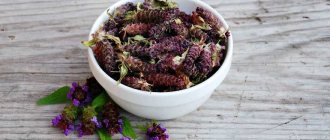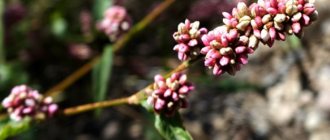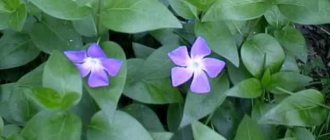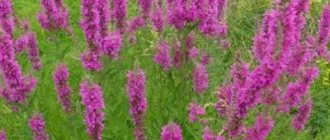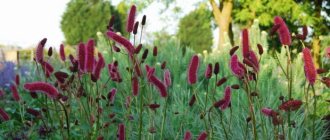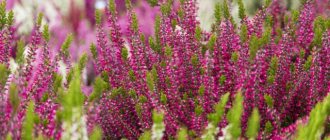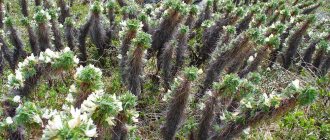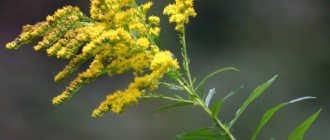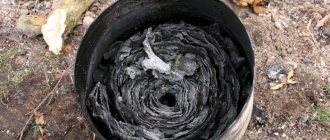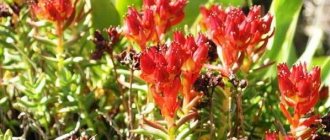Despite the abundance of medications, many people still actively use traditional medicine. And they have many advantages: completely natural composition, minimal number of contraindications and side effects. And these funds are significantly cheaper. In folk medicine, the plant jaundice has become widespread. It is used to treat cardiovascular diseases, as well as for weight loss, gastrointestinal pathologies and rheumatism.
What is this plant? How to prepare it correctly? What are the medicinal properties and contraindications of jaundice? We will answer these and other questions in more detail below.
What it is?
Jaundice is usually called a large genus of herbaceous plants, consisting of more than 200 subspecies. However, most of them are not used in folk medicine. Only 2 types of this plant have healing properties: gray and gillyflower. For its beneficial properties, it is often called heart grass. It helps lower blood pressure and also has a strong diuretic effect, preventing edema. Jaundice grows in the northern hemisphere, but some gardeners consider it a weed. These are annual or biennial plants that can be easily identified by their small but bright yellow flowers.
The most common is the gray subspecies. In appearance, it more closely resembles grass topped with flowers. The height of its stem can vary from 30 to 90 cm. It has a gray color with a barely greenish tint. Its leaves are small and narrow, and the flowers are located at the tips of the branches. Jaundice is an early plant, so it usually blooms in May or early June. You can find it on the edges of pine forests, meadows or even rocky slopes. The plant often grows along highways, but it is not recommended to collect it there due to the large amount of harmful emissions.
Levywort is another medicinal type of plant. It is distinguished by larger leaves. Its trunk can reach 110-125 cm in height. The appearance of the plant is not very attractive. The massive trunk is decorated on all sides with large leaves, but the flowers of this type of jaundice are small and inconspicuous. They are usually located at the very top. But this type of jaundice blooms throughout the summer - from late May to early September. You can find it in meadows and forest edges; the plant grows well on river sand and along roadsides.
Composition of herb jaundice
The entire above-ground part of the plant has healing value. The seeds of this herb are also used in folk medicine. The positive effect on the cardiovascular system is due to cardiotonic glycosites, which are contained in all parts of the plant. Flowers and seeds contain the most of them - about 6%. The leaves contain about 1.5% glycosites, and the stems only 0.5%.
Gray jaundice is a herb that contains many flavonoids and tannins. They also have a beneficial effect on heart health, and also strengthen and protect blood vessels from destruction. The plant contains several beneficial acids, including palmitic, linolenic and oleic.
The stem, leaves and flowers of jaundice are a storehouse of useful microelements. This plant contains calcium, potassium, iron, copper, zinc, manganese and selenium. The seeds are a rich source of fatty oil. Its share in their composition may exceed 40%. The seeds also contain a small amount of essential oil (less than 1%).
Jaundice levcoa - description, beneficial properties, application
Levcoyum is an annual or biennial herbaceous plant of the cruciferous family. It is widely used in folk and official medicine. When the plant blooms, the above-ground part needs to be harvested. Jaundice has a calming effect, it can be used to calm the nerves, it is effective for cardiovascular diseases. Jaundice juice is part of the drug for the heart - cardiovalen. These types of drugs can be used for heart disease, angina pectoris, and autonomic neurosis. Jaundice has a strong and rapid effect on the heart.
Medicinal properties
The pharmacological use of any plant depends on its composition. Since jaundice contains a large amount of cardiotonic glycosides, it is used to treat symptoms of tachycardia at home. And the positive effect of such therapy is achieved after just a few days of use. The plant has a strong cardiotonic and sedative effect on the body. That is, it stimulates the activity of the myocardium, thereby improving its functioning. At the same time, it slows down the heartbeat, which helps fight tachycardia.
Jaundice, when used correctly, has an antiseptic and anti-inflammatory effect on the body. Therefore, it is used not only internally, but also externally, for example, in the presence of skin lesions. Compresses made from this plant speed up their healing. Decoctions of jaundice have a diuretic effect, which means they are useful for edema and kidney problems.
Indications for use
Many people use this plant to treat symptoms of tachycardia and other cardiovascular diseases at home. It can really help, but it is worth remembering that it should be used only after consultation with your doctor. Jaundice is an effective traditional medicine, but for complex pathologies it cannot replace medications. It is better to use its decoctions and infusions as an auxiliary therapy to speed up recovery. The doctor will also tell you in what dosage you should take jaundice. It will also indicate the duration of the course of treatment. After all, excessive and uncontrolled use of traditional medicine can only worsen the patient’s condition.
When can jaundice be used for treatment? As a rule, it is prescribed for the following pathologies:
- Diseases of the cardiovascular system. These include myocarditis, heart failure, heart defects, tachycardia, arrhythmia and ischemic disease. Jaundice is also used for shortness of breath.
- Sclerotic changes in the lungs, and also as an adjuvant for bronchial asthma and tuberculosis.
- Diseases of the gastrointestinal tract and liver.
- Headaches and insomnia. Jaundice has a sedative effect, so it calms the nervous system, and a person falls asleep faster.
- Rheumatism, radiculitis and other inflammatory diseases of the musculoskeletal system.
- Varicose veins and any skin lesions.
- Diseases of the urinary system and persistent swelling.
Medicinal properties of jaundice and use in folk medicine
Jaundice is a plant known in folk medicine. Due to its healing properties, it is also called core, heart armor. Even in official medicine, the plant is recognized as an effective remedy for combating heart failure. The herb is part of the popular drug Cardiovalen.
But this is only one of its properties. In fact, the list of indications for the use of this plant is quite large. Healing decoctions, alcohol and water tinctures are prepared on the basis of jaundice.
Jaundice is found in places with sandy, clay and rocky soil. It can be found near rivers and on forest edges. The culture is found in central and eastern Europe, China, Kazakhstan, and Mongolia.
The plant belongs to the Cruciferous family. More than 230 species of this culture are known, but gray and gillyflower are actively used in medicine (pictured below).
The first refers to biennial, and the second to annual crops.
Botanical description of the plant:
- The root system of the grass is voluminous and branched.
- The stem of the gray jaundice is of the corresponding shade, but the stem of the gillyflower is rich green.
- The leaves have an oblong shape and slight pubescence. They are up to 6 cm long and up to 5 mm wide.
- Small flowers are collected in brushes. They are usually a rich yellow hue. Flowering begins in May.
- Fruits are produced from early summer until August. They are cylindrical pods. The surface is pubescent and has a light tint. The seeds are small, brownish-yellow.
- The height of the gray icterus is up to 90 cm, and the height of the gillyflower is up to 60 cm.
Ready-made raw materials are purchased in pharmacies. You can assemble it yourself. This is usually done in May, before the flowering period, since the concentration of beneficial properties will subsequently decrease. The ground part needs to be cut off, but the lower part should not be touched. Collection should be carried out in the daytime, when the dew has completely dried.
The raw material must be dried immediately, spread out in a thin layer on a horizontal surface and periodically turned over so that the grass does not become damp. It is best to do this in the attic or outside in the shade. You can also hang collected plants in bunches.
The resulting dry raw materials should be distributed in paper bags and stored in a dark, well-ventilated place for no more than a year.
The benefits of jaundice for the human body are due to the unique composition of the herb. It contains the following active chemical compounds:
Components
Effect on the body
13 glycosides were found in jaundice, but the most valuable are ericordin and eryzimin. They cope with heart diseases. These substances eliminate tachycardia, improve blood flow, normalize the rhythm of the heart and the conduction of nerve impulses to tissues. In addition, they have a diuretic property, so the herb is used for hypertension to combat edema
Considered natural antioxidants. They have a cardioprotective effect, relieve spasms of smooth muscles, and improve blood flow. They have weak diuretic and choleretic properties, improve digestion
Fatty acids
Participate in lipid metabolism, form cell membranes, have a beneficial effect on the nervous system
Organic acids
Jaundice contains malic, citric, and ascorbic acids. They affect metabolic processes, relieve inflammation, have an antioxidant effect, and stimulate internal secretion
Improve appetite, increase the level of acidity in the stomach, have a choleretic effect, prevent rotting and fermentation in the intestines
Is a source of energy for the whole body
Jaundice is famous for its numerous medicinal properties:
- strengthens capillaries;
- improves heart function, protects its tissues (not only muscle, but also blood vessels, nerve fibers);
- dilates coronary vessels;
- improves blood flow and heart rhythm;
- lowers blood pressure;
- removes spasms;
- has a diuretic effect;
- has a choleretic effect;
- has sedative properties;
- is a natural antioxidant;
- stops inflammatory processes;
- stops bleeding;
- strengthens and stimulates the immune system;
- normalizes metabolic processes;
- cleanses the body of toxins, excess cholesterol, toxins and other harmful substances;
- has general strengthening and supporting effects.
Thanks to these beneficial properties, jaundice is used for the following diseases and conditions:
- dropsy;
- tuberculosis;
- shortness of breath, bronchial asthma;
- hyperthyroidism;
- rheumatism, gout, arthritis;
- diabetes;
- migraine;
- neurosis, insomnia, depression, mental disorders;
- hypertension;
- ischemia, angina pectoris, arrhythmia, myocarditis, heart failure in acute and chronic form;
- varicose veins, decreased vascular tone, capillary fragility;
- cystitis, pyelonephritis, glomerulonephritis, urethritis, decreased bladder tone, urolithiasis.
The medicinal plant can be used at home to prepare various healing remedies.
The following recipes are often used:
Indications
Recipe
Application
To normalize blood flow (usually this medicine is prescribed after a heart attack to improve the functioning of the circulatory system)
- 1. Take 15 g of dried and crushed above-ground parts of the herb.
- 2. Pour 200 ml of water into the raw material and cook for 15 minutes.
- 3. Strain
Drink a quarter cup a day. It is allowed to add 1 tsp. honey
For varicose veins and rheumatism
- 1. Take 13 g of dry herb and mix with the same amount of grated propolis.
- 2. Add the zest of half a lemon.
- 3. Pour 500 ml of medical alcohol into the raw material.
- 4. Keep for 2 weeks in a closed glass container, which needs to be shaken periodically.
- 5. Filter the composition
For oral administration, dissolve 20 drops of tincture in 100 ml of water. Drink once a day. The tincture can also be used for rubbing and compresses.
Article on the topic: Hydrastis - useful properties, description
For heart failure, angina and heart attack
- 1. Mix 3 liters of water, 1 tbsp. l. sugar and a glass of sour cream.
- 2. Add 50 g of jaundice and 20 g of wormwood to the composition.
- 3. Mix everything and place the container with the contents in a warm place for 3 weeks
Take 100 ml twice a day
For diabetes
- 1. Mix jaundice, red clover and yarrow (take 10 g of all components).
- 2. Pour the mixture with 500 ml of boiling water.
- 3. Infuse for 3 days in a warm room.
- 3. Strain
Drink half a glass 2-3 times a day
To normalize the functioning of the pancreas
- 1. Take 100 g of raw material per 500 ml of vodka.
- 2. Infuse for half a month.
- 3. Take 20 drops, dissolving in 100 ml of water
Take 20 drops, dissolving in 100 ml of water
All these drugs are beneficial for the body, but before using them, you should definitely consult a doctor.
The herb helps with weight loss. To do this, take 0.1 g of dried plant powder daily, three times a day, 20 minutes before meals. The indicated dose is placed on the tongue and swallowed with a small sip of water. The duration of treatment is 2 months, then a break of 15 days, after which the course can be repeated.
Thanks to jaundice, you can get rid of up to 4 extra pounds within a month. This is due to the fact that the chemicals in the plant have a beneficial effect on metabolic processes and digestion. The herb prevents blood sugar levels from rising, so you don't feel hungry.
Fatty acids that are present in jaundice accelerate the breakdown of fatty deposits and the removal of cholesterol. And thanks to its diuretic properties, the herb eliminates fluid retention in the body.
Jaundice is also used in cosmetology. A decoction of the plant (1 tablespoon of dry herb per glass of water) helps improve skin condition, strengthens hair follicles, normalizes oily hair, and removes dandruff.
Despite its beneficial properties, the herb jaundice is poisonous. This is due to the action of glycosides. In humans, poisoning is caused by an overdose of drugs and is manifested by symptoms such as:
- weakness;
- constipation;
- nausea and vomiting;
- headache;
- increased secretion of saliva;
- slowdown of the heart;
- decrease in blood pressure.
In this case, you should immediately stop using jaundice-based medications and go to a hospital where detoxification is carried out. After 5 days, after consultation with a doctor, it will be possible to start therapy again, but reduce the dosage.
As for contraindications, these include:
- atherosclerosis;
- heart attack;
- myocarditis;
- severe kidney disease;
- pregnancy and lactation period.
Most often, the harm of jaundice manifests itself when the evacuation function of the intestines decreases. Therefore, it is advisable to establish the functioning of this organ before starting therapy, as well as constantly monitor stool during treatment. If constipation occurs, a cleansing enema or the use of a laxative is required.
Who should not use jaundice?
And although traditional medicine is usually considered safe, it is not recommended to take them uncontrollably. This may lead to poor health. It is worth remembering that all plants have contraindications. The healing properties of jaundice help fight many ailments. But not all patients can use it. Thus, it is not recommended to use decoctions and infusions of this plant for people who suffer from arterial hypotension. Jaundice helps lower blood pressure, and taking it will only worsen the patient's condition. It is not recommended to use it in acute endocarditis, atherosclerosis and cardiosclerosis. Heart herb should not be used by pregnant or lactating women.
It is best to use jaundice after consulting a doctor. He will prescribe both the dosage and duration of the course. The plant can be consumed for a long time. It is not addictive, so its therapeutic effect does not weaken over time. But you shouldn’t rely on decoctions either. Their excessive use can lead to an overdose. It can be suspected when severe nausea develops, developing into vomiting, headache and weakness in the legs.
Photo of jaundice
https://www.youtube.com/watch?v=AuS-BKIJOvo
Read here! Cuff - description of a medicinal plant. Collection, preparation and contraindications for use (105 photos)
Please repost
1+
Proper preparation of the medicine
Of course, the easiest way is to buy gray jaundice at a pharmacy. It is sold there throughout the year, not just in the summer. Extracts and preparations of this plant have a budget price, which starts at 75 rubles per package. The exact cost will depend on the specific pharmacy, region and type of medicine.
In the summer, you can collect jaundice yourself. It is best to do this in environmentally friendly places. For example, on forest edges and meadows that are remote from roads and industrial enterprises. It is necessary to collect jaundice during the flowering period, which occurs at the end of May and June. It is best to choose grass whose buds have not yet fully blossomed. Such plants contain more useful substances. After collecting the jaundice, it must be thoroughly washed and dried. In folk medicine, the entire above-ground part of the herb is used. The plant should be dried in a dark and dry room. You can use cardboard boxes or paper bags.
The shelf life of cut and dried jaundice is approximately six months. After this, it begins to lose its beneficial properties.
Brief description of jaundice
Levcoyus jaundice
(
jaundice
) is an annual or biennial herbaceous plant with a straight, branched stem 25–120 cm high, covered with appressed two-pointed hairs.
Leaves are oblong-lanceolate or lanceolate, acute, 2–6 cm long and 2–13 mm wide, at the base entire-marginal or vaguely toothed, covered with sparse, appressed, tripartite hairs; the lowest ones are narrowed into a short petiole, the rest are sessile. Pedicels are 5–16 mm long, horizontal or obliquely directed upwards. The flowers are small, the petals are bright yellow, regular, four-petaled. The pods are sparsely covered with three- to five-parted hairs. Blooms from May to September. Fruits regularly and is easily renewed by self-sowing. Places of growth:
Widely distributed in the European part of Russia, in the Urals, in Siberia to Kamchatka and in the Far East to Sakhalin. It grows in fields and fallow lands as a weed, in upland and floodplain meadows, along forest edges and sparse forests, in thickets of bushes, along coastal cliffs.
Jaundice for diseases of the cardiovascular system
The use of decoctions and infusions of jaundice has a beneficial effect on the health of the heart and blood vessels. They are effective for arrhythmia and high blood pressure. Infusions are taken for pain in the heart, as well as for rheumatic lesions of this organ. At the same time, you can take the plant not only internally. It can also be used to prepare healing baths for high blood pressure. The herb soothes the skin and has an anti-inflammatory effect. Treatment duration is 10 baths. After this, you may notice that the pressure has dropped and the rhythm of the main organ has become smoother.
How to treat cardiac tachycardia with jaundice? To do this, it is recommended to take a decoction. You can make it from purchased or dried herbs yourself. To prepare it you will need 1 teaspoon of the plant and 300 ml of water. They need to be put in a metal container and put on fire. The broth should be boiled for 10 minutes. It is then left to cool. The finished product is taken one teaspoon four times a day. It not only helps with tachycardia, but also improves the functioning of the entire cardiovascular system. This is proven by numerous studies.
Herbal treatment of cardiac arrhythmia is also carried out using decoctions and infusions. Jaundice helps normalize the rhythm of the organ.
Against high blood pressure, you can use a stronger infusion. To prepare it you will need a tablespoon of gray jaundice and 250 ml of freshly brewed boiling water. They need to pour over the grass and leave to infuse for 2 hours. After this, the finished mixture must be strained and refrigerated. The blood pressure infusion is taken for 2 months. You need to drink 1 glass 3 times a day. It is recommended to prepare a fresh infusion daily.
Jaundice spreading - application, treatment, description
Spreading jaundice, translated as Erysimum canescens, other names for this plant are: graying jaundice, grayish, gray, scattered, grayish.
This representative of the flora has single or branched stems; its height can reach up to 90 centimeters. The leaves of the plant are entire, they are oblong or linear, while the lower ones are petiolate, and all the rest are sessile. The flowers are four-parted, yellow in color, collected in racemose inflorescences at the top. The fruit is represented by a tetrahedral pod that ripens around mid-summer.
Spreading jaundice is found in the European part of our country. It grows on slopes, in forest clearings and edges, is localized among bushes, grows in steppe areas, and can be seen on outcrops of various rocks.
This plant has a herb that is used for medicinal purposes. It contains cardiac glycosides, including canescein, strophanthidin, cheirotoxin, eryzimin, erizimoside, erikanoside, erizimosol, ericordin and desgluco-cheirotoxin.
In addition to these components, the herb contains organic acids, including malic, tartaric and citric. Also present are alkaloids, tannins, quercetin and isorhamnetin, and some other chemical compounds.
• Collection and procurement of raw materials
It is recommended to harvest the spreading jaundice grass during flowering, and it is recommended to cut it at a height of 15 centimeters from the surface of the ground. After which it must be sorted, removing darkened leaves and stems. Next, the raw materials are cut into small pieces and laid out on a spacious tray.
Next, it is recommended to turn the grass daily to prevent it from becoming damp, which can lead to the growth of mold fungi. Then, when the raw materials are completely dry, they can be packaged in paper bags or placed in cardboard boxes.
Then the grass is stored for two years in a ventilated room; after this period, it is not recommended to use the raw material, since it will lose all its properties, and drugs prepared from it can harm the body.
• The use of common jaundice
The plant is used for the preparation of various medicinal potions, for example, tincture, infusion and decoction, all of them have medicinal properties, this depends on the glycosides present in the raw material, namely, eryzimin and erizimoside. These substances affect cardiac activity, and their action is similar to strophanthus.
Medicines from the spreading jaundice are effective for cardiovascular failure; they are recommended for use in arterial hypertension, angina pectoris and cardiosclerosis; in addition, they are used for many diseases of the respiratory system.
In addition to the effect on the heart, preparations prepared from spreading icterus have an expectorant effect, and these drugs also have a positive effect on the nervous system, have a calming effect and cause a diuretic effect.
Based on this plant, a complex drug Cardiovalen is prepared; it is recommended to prescribe it 20 drops up to two times a day if there is a history of autonomic neuroses, angina pectoris, and also rheumatic defects.
To prepare the tincture, you will need alcohol in the amount of one hundred grams, they should be poured with 20 grams of dry herb, it is recommended to first crush the raw materials using ceramic devices in the form of a mortar and pestle. Next, the bottle with the drug should be placed in a dark place at room temperature, for example, you can put the container in a regular closet.
It is recommended to shake the contents of the bottle daily; this will help all the necessary substances to be better released from the jaundice herb. After a week, you can begin filtering the drug.
For straining, you can use gauze, first fold it in half, and cover it with some clean container, into which the finished tincture is poured. After which they begin to use the tincture, you need to take ten drops and dissolve them in boiled water, this drug is taken three times a day for heart disease. Of course, in this case, do not forget to first consult a cardiologist.
Article on the topic: Forget-me-not field - useful properties, description
To prepare an infusion of spreading jaundice, it is recommended to take a teaspoon of the herb of this plant; of course, it should be crushed to a homogeneous mass, after which the raw material can be poured into a glass dish or enamel container; it is advisable not to use aluminum containers for making the drug, as this can lead to its rapid oxidation.
After selecting the appropriate container, you need to pour one glass of boiling water into it, mix everything well and cover with a lid. Next, the infusion should stand for forty minutes, and then you can strain it through a fine strainer.
It is recommended to consume the finished infusion one tablespoon up to four times a day. As for its storage, the drug must certainly be in the refrigerator and no more than three days, because after this period the liquid will lose its medicinal qualities and will not have a corresponding therapeutic effect on the body.
To use drugs prepared from spreading jaundice, you must first consult a doctor, and only after his consent begin making infusions and tinctures, which can then be used for medicinal purposes.
Levcoa type of plant
This type of herb is also widely used in folk medicine. It contains more cardiotonic glycosides. You need to collect gillyflower during its active flowering period. At this time, more nutrients accumulate in it. This type of plant is useful for diseases of the cardiovascular system. Decoctions and infusions of herbs are used for high blood pressure and diabetes. When taken, the pulse also evens out and the general condition of the patient improves. Levcoyum is also useful for skin lesions. Compresses from it are applied to wounds, cuts and bites to relieve inflammation. Jaundice also has an antiseptic effect and promotes the rapid removal of pus from the wound.
To prepare such a compress you will need 30 g of dried herbs, lemon zest and 400 ml of alcohol or vodka. If desired, you can use a little propolis, which also has a calming effect. The ingredients are mixed and left to infuse for 2 weeks. After this, the finished infusion can be used as a compress, as well as for the treatment of varicose veins. Apply it daily for 1.5 hours or rub your feet before going to bed.
Gray jaundice: description
The plant is popularly called core or spas - grass. It is used as a medicine for cardiovascular diseases, hence the name. As already written above, in traditional and folk medicine, only two types of yellow flowers are used.
Spreading and common jaundice are very similar in appearance and have almost the same effect on the human body. Both plants have medicinal properties and are used to treat heart-related diseases.
In addition, levkoy heart is included in cough preparations. And the spreading or gray jaundice, unlike the gillyflower, has a gray color and a shorter stem.
Areas of Use of Cordella Herb: Apart from being used for various diseases, this cardiac herb is used in other areas. In everyday life – as feed for livestock. In landscape design - as an ornamental plant. Included in many perfumes and herbal teas for weight loss.
Health benefits of jaundice
Medicinal jaundice is used as a medicinal component not only to relieve heart disease, but also to improve well-being and elevate mood.
The medicinal properties of the plant bring enormous benefits. Pharmacognosy notes the following health effects:
- Tincture and decoction can improve sleep, make it stronger and healthier.
- A person who takes infusions and soothing teas is forever freed from coronary heart disease.
- The effect of the cardiovascular system improves.
- Your mood improves, you experience less depression, and your nervous system returns to normal.
- The heart muscle begins to function better.
Before using any preparations from this plant, you should pay special attention to contraindications. Despite all the healing and beneficial properties of this herb, it can be harmful to health, because. is, in fact, a poisonous plant.
- Contraindicated for people with atherosclerosis, cardiotonic disease and acute myocardium.
- Pregnant women and children are prohibited from taking jaundice, as well as women during breastfeeding.
- Allergic reactions of the body.
- Individual intolerance
Article on the topic: Small galangal - beneficial properties, description
The plant is of great benefit in the treatment and prevention of angina, hypertension and high blood pressure. In this case, it is necessary to make juice from the part of the plant that grows above the ground. Decoctions will perfectly cure diseases of dropsy and arrhythmia.
Core seeds are often used to heal wounds, and the herbal collection is recommended to be drunk during inflammatory processes in the body. To treat insomnia, it is recommended to prepare and brew tea from it. It can also be used for bronchitis and pancreatic diseases.
Use for weight loss
The medicinal properties of the herb jaundice are also actively used for weight loss. It helps reduce blood sugar levels and helps remove excess fluid from the body. In addition, the plant can improve a person’s overall well-being, which greatly worsens when he limits his diet.
For weight loss, grass is used, ground into powder. Every day, half an hour before meals, you need to eat 100 grams of jaundice. This must be done at least 3 times a day. A similar food supplement can help you lose up to 4 kg in a month. You cannot take a lot of jaundice for weight loss on an ongoing basis. You should maintain a break of 15 days between courses. To prevent obesity, you can consume 100 grams of powder per day. To lose more kilograms, it is recommended to exclude unhealthy foods from your diet: sweets, flour, fatty and fried foods.
Dosage forms, method of administration and dosage of preparations of icterus leucea
Effective medicinal preparations and forms used in the treatment of many diseases are made from the jaundice herb. Let's look at the main ones.
Article on the topic: Common lingonberry - beneficial properties, description
Infusion of the herb jaundice levcoa:
Brew 1 tsp in 2.5 cups of boiling water. herbs, leave for 2 hours (closed tightly), strain. Take 1 tbsp. l. 3 times a day, 30 minutes before meals for cardiovascular failure.
Infusion of the herb jaundice levcoa:
Brew 1 cup boiling water 1 tbsp. l. herbs, leave, wrapped, for 40 minutes, strain through 3 layers of gauze. Use 1 tbsp. l. 4-5 times a day with sugar as a remedy for scurvy.
The juice from the aerial part of the plant is part of the drug "Cardiovalen", which is used for rheumatic heart defects, cardiosclerosis, circulatory disorders and angina pectoris.
Alcoholic extract of jaundice:
Alcohol extract of jaundice reduces shortness of breath, palpitations, congestion in the lungs, has a diuretic effect, and is effective for heart failure of degrees I and II, heart defects and cardiosclerosis. Extracts from the plant exhibit antibacterial activity against staphylococci and streptococci.
The glycoside drug “Korezim” has high activity, low toxicity, is quickly absorbed, and does not accumulate.
The drug "Erizimin", obtained from the aerial part of the spreading icterus, is close in nature to strophanthin, and is especially effective for patients with mitral heart disease.
Jaundice powder
The medicinal properties of the herb are also used for disorders of the pancreas and liver. The plant has an anti-inflammatory and choleretic effect. This stimulates the work of these organs. In this case, it is recommended to use the same powder as for weight loss. Doctors recommend taking 100 grams of jaundice daily before meals. The powder not only improves the functioning of the pancreas, but also regulates insulin production. In turn, this helps to avoid the onset of diabetes and other diseases of the cardiovascular system and gastrointestinal tract.
Infusion of jaundice in vodka. Peculiarities
An infusion of jaundice herb prepared with the addition of vodka or alcohol has an anti-inflammatory and warming effect. It can be taken orally in small quantities, but much more often it is used for compresses for rheumatism or varicose veins. You can buy a ready-made extract at the pharmacy, or you can prepare it yourself at home. You will need dried herb and any vodka (4 tablespoons of the plant per half liter). They need to be thoroughly mixed and infused in a glass container for two weeks. After this, the infusion is ready for use. It is used for heart disease and high blood pressure. Place about 15-20 drops in a glass of water and drink it shortly before meals.
Beneficial properties of jaundice, for which diseases it is recommended to use it
The green mass and seeds of the plant contain a unique combination of elements - glycosides, tannins, vitamins, microelements, flavonoids.
Article for you:
Meadowsweet: medicinal properties and contraindications
Contains essential and fatty oils and a number of organic acids. Jaundice also boasts a huge amount of minerals - iron, magnesium, selenium, copper, chromium. Thanks to such a rich composition, the plant has become famous for its numerous medicinal qualities, including:
- Anti-inflammatory. Home remedies effectively affect inflammatory processes that spread to the surface of the mucous membranes of internal organs. External use helps stop inflammation on the skin.
- Antiseptic. Tinctures and decoctions destroy harmful microflora, viruses, and infections.
- Healing. It is recommended to use the products for non-healing wounds, deep burns, and skin lesions. Simultaneously with the launch of the regenerating process, the active components have a beneficial effect on the condition of the dermis and improve the health of the epidermal tissue.
- Choleretic, diuretic. Decoctions effectively affect the liver and kidneys, cleanse, remove excess fluid, and relieve swelling.
- Calming. It is recommended to use for nervous disorders, breakdowns, stress, and insomnia.
- Expectorant. An infusion of the plant helps thin mucus, expectorate, and remove phlegm from the respiratory tract.
It is recommended to carry out treatment for heart disease, malfunction of the circulatory system, and blood pressure. Traditional treatment with jaundice-based remedies will help cope with headaches and attacks of shortness of breath.
Benefits for rheumatism
The medicinal properties of the herb jaundice are also useful for rheumatism. Decoctions from plants have an anti-inflammatory effect on joints and also help relieve pain. In this case, jaundice is taken not only internally, but also compresses are made. It can be used for any inflammatory disease of the musculoskeletal system, as well as for varicose veins.
To enhance the effectiveness of the decoction, you can add to it not only jaundice, but also other medicinal herbs. St. John's wort, nettle, rose petals, chamomile flowers and rose hips have an anti-inflammatory effect. The ingredients used must be mixed in equal proportions and filled with water. The decoction can be taken orally for 2-3 months to obtain a long-term positive effect. You can make compresses from a stronger infusion and apply them to the affected joints. Jaundice should be kept on the skin for at least 2 hours. But it is best to do compresses at night.
For hyperthyroidism
A decoction of jaundice in combination with other herbs helps normalize the functioning of the thyroid gland and stabilize the production of hormones. To prepare it you will need not only dried herbs, but also other ingredients. These are lemon balm, wormwood, rose hips, strawberry leaves and plantain. You can prepare them yourself in advance, but the easiest way is to buy medicinal preparations at the pharmacy. You need to mix all the ingredients in equal proportions, then add water and put on fire. The broth should be boiled for 10-15 minutes. To notice improvements in thyroid function, it is recommended to drink it for 4 months.
For gastrointestinal diseases
Taking decoctions of this herb also has a beneficial effect on the functioning of the gastrointestinal tract. Due to poor nutrition, overeating and poor hygiene, harmful bacteria actively multiply in the body. They cause inflammation of the mucous membranes of the stomach, duodenum and intestines. This slows down the process of digesting food. A person begins to suffer from heaviness in the stomach, bloating, heartburn and belching. In this case, it will be useful to undergo a course of treatment with jaundice. It has an anti-inflammatory effect and reduces the acidity of the stomach, which contributes to the rapid restoration of its mucous membrane. It is effective to take jaundice as an adjuvant in complex therapy along with antibiotics.
The plant also helps to activate digestion. Infusions and decoctions are taken to normalize stool. Jaundice effectively fights both diarrhea and constipation. To notice the positive effect of treatment, you need to use decoctions for 1-2 months.
Medicinal kvass with jaundice
It is not necessary to prepare only decoctions or infusions. All the medicinal properties of the herb jaundice are preserved if you make kvass from the plant. Unlike decoctions, it has a pleasant taste and has a refreshing effect. In addition, this drink also has a beneficial effect on the cardiovascular system.
To prepare it, you will need 50 g of dried jaundice, a teaspoon of sour cream and a glass of sugar. Mix all these ingredients together and add 3 liters of pre-boiled water. After this, the finished mixture must be poured into bottles or jars. They are infused for 2 weeks so that they can ferment. It is best to store kvass at room temperature to speed up the process. Try to stir the drink in the cans every day.
Ready kvass should be drunk before meals. The recommended dosage is half a glass at a time.
